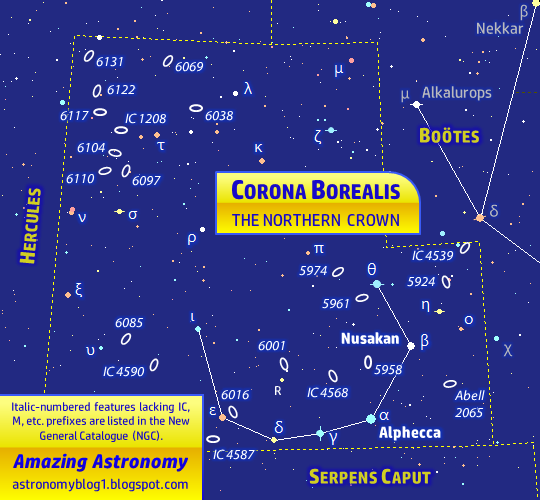CORONA BOREALIS, also known as the Northern Crown, is a small but noticeable constellation forming a semicircular 'crown' with seven main stars. It is prominently visible in the Northern Hemisphere's Spring and Summer seasons, while it is harder to find in the Fall and Winter skies. In the Southern Hemisphere, Corona Borealis is only visible near the horizon in the northern sky, during the seasons of Fall and Winter (Spring and Summer in the Northern Hemisphere). From the Northern Hemisphere perspective, the constellation is west of Boötes (an easily identifiable constellation with a bright star, Arcturus), south and east of Hercules, and north of Serpens Caput (the eastern part of Serpens, which symbolizes a snake's head). Alphekka (Alphecca) is Corona Borealis' brightest star with an apparent magnitude brightness ranging from 2.21 to 2.32, and Nusakan is the second brightest (3.7).
Interesting Fact: Several exoplanets — planets that are outside of our Solar System — have been discovered in Corona Borealis' region!


No comments - Post Comment Here
Post a Comment